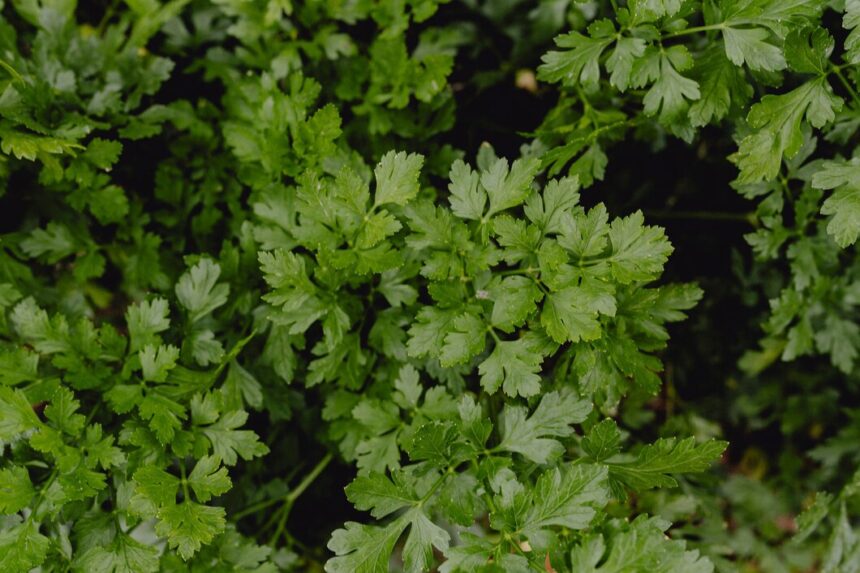Cilantro (coriander) is a popular herb used in many dishes worldwide, and it can be a lucrative crop for South African farmers. Here’s an in-depth guide covering all stages of cilantro cultivation from land preparation to storage, with information on inputs, machinery, fertilizers, water needs, pest and disease management.
1. Land Preparation and Soil Requirements
Cilantro grows best in well-draining, loamy soils with a pH of 6.2 to 6.8. Proper land preparation is crucial to enhance soil fertility and drainage.
- Land Clearing: Clear any existing weeds or debris from the field to minimize competition for nutrients.
- Soil Testing: Conduct a soil test to determine pH and nutrient levels. If necessary, lime can be added to adjust soil acidity, or sulfur to lower pH if the soil is too alkaline.
- Tilling and Leveling: Use a tiller or plow to break up the soil, ensuring it is loose and well-aerated. Level the soil to ensure even water distribution.
- Adding Organic Matter: Integrate compost or well-rotted manure into the soil to boost organic content and fertility.
Machinery Required: For small farms, a hand tiller may suffice. Larger farms benefit from using tractors with plowing and tilling attachments to save time.
2. Sowing Cilantro Seeds
Planting cilantro seeds properly is essential for achieving good germination and optimal plant growth.
- Planting Depth and Spacing: Sow seeds 1-2 cm deep. Space plants 10-15 cm apart within rows, and maintain 25-30 cm between rows. This promotes adequate airflow and reduces disease risk.
- Season and Temperature: Cilantro grows best in cooler temperatures. Plant in early spring (August to September) or in autumn (March to April) to avoid extreme heat.
- Seed Preparation: Cilantro seeds have a hard shell. Gently crush them before planting to encourage faster germination.
3. Fertilization Needs
Cilantro is not highly nutrient-demanding but benefits from the right balance of essential nutrients.
- Base Fertilization: Before planting, apply a balanced N-P-K (Nitrogen-Phosphorus-Potassium) fertilizer, ideally with a ratio like 10-10-10 or 20-20-20, to support early growth.
- Nitrogen Boost: Apply a nitrogen-rich fertilizer, such as urea, once plants are 4-5 weeks old to encourage leafy growth. Limit nitrogen to prevent excessive foliage with minimal flavor.
- Application Frequency: Fertilizer can be applied every 4-6 weeks if the soil is deficient, but over-fertilizing can reduce cilantro’s aromatic quality.
4. Watering Requirements
Cilantro requires consistent moisture but can suffer if overwatered.
- Watering Schedule: Provide 25-30 mm of water per week, adjusting based on rainfall. Keep soil consistently moist but not waterlogged.
- Irrigation Method: Drip irrigation is ideal as it conserves water and keeps foliage dry, reducing the risk of fungal diseases.
- Frequency: Watering frequency should depend on soil moisture levels, ideally checking moisture with a soil probe or by hand if necessary.
5. Growth Stages of Cilantro
Understanding each growth stage helps farmers provide the right care at the right time.
- Germination (7-10 Days): Seeds germinate within a week to 10 days if kept moist and planted in cool soil.
- Seedling Stage (2-4 Weeks): At this stage, plants are vulnerable to pests like aphids. Monitor and manage pests as necessary.
- Vegetative Growth (4-8 Weeks): Leaves grow rapidly, making it the ideal time for a nitrogen boost to enhance foliage. Regular weeding is essential during this period.
- Flowering (8-10 Weeks): If grown for leaves, harvest before flowering to ensure maximum flavor. If seeds are desired, allow plants to flower and set seed.
6. Pests and Disease Management
Cilantro is susceptible to certain pests and diseases, especially in humid or crowded conditions.
- Common Pests:
- Aphids: These can stunt growth and spread disease. Control with neem oil or insecticidal soap.
- Cutworms: Protect young plants by placing collars around seedlings. Use biological controls like Bacillus thuringiensis (Bt) if necessary.
- Diseases:
- Powdery Mildew: This fungal disease appears as white powder on leaves. Avoid overhead watering and ensure proper spacing to promote airflow.
- Damping-Off: This seedling disease is caused by excess moisture. Avoid overwatering, especially in the early stages.
Herbicide and Pesticide Use: Herbicides can be applied before planting if weeds are dense, but manual weeding is often safer for cilantro. Use pesticides sparingly, and opt for organic solutions like neem oil when possible to maintain the herb’s natural quality.
7. Harvesting and Post-Harvest Storage
Timing your harvest ensures the highest quality in flavor and aroma.
- Harvesting Leaves: For fresh leaves, harvest 4-6 weeks after planting. Cut the leaves near the base with a sharp knife or shears, leaving some foliage to allow for regrowth.
- Harvesting Seeds: For coriander seeds, allow the plant to flower and mature fully. Seeds can be harvested once they turn brown and start to dry on the plant.
- Storage: Fresh cilantro leaves should be stored at 1-4°C in a high-humidity environment. For longer storage, leaves can be dried and stored in an airtight container. Seeds should be fully dried before storage to prevent mold.
Machinery Required for Harvesting: Hand harvesting is suitable for small to medium plots. For larger fields, mechanical harvesters can expedite seed harvests, but these should be calibrated to handle the delicate nature of cilantro plants.
8. Yield and Economic Considerations
Under optimal conditions, cilantro can yield approximately 1-2 tons of fresh leaves per hectare or 0.8 to 1 ton of dried seeds per hectare. The profitability will depend on market demand, so staying updated on market trends is essential.
Growing cilantro can be a rewarding venture for South African farmers, especially with the rising demand in culinary markets. By carefully managing soil preparation, watering, pest control, and timing your harvests, you can achieve high-quality yields. Implementing these practices will help ensure successful cilantro production, from planting to storage, and make the crop a valuable addition to your farm.







